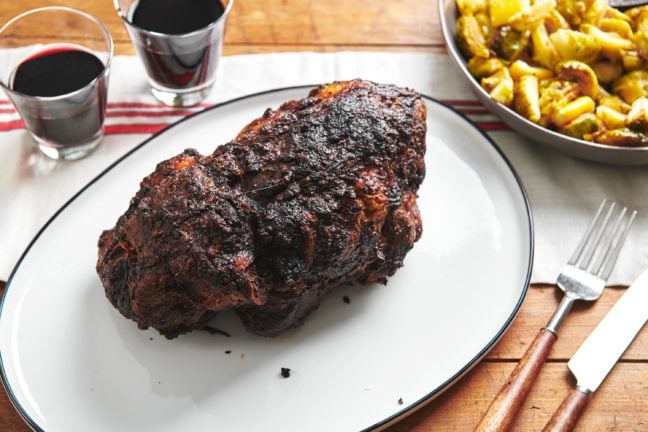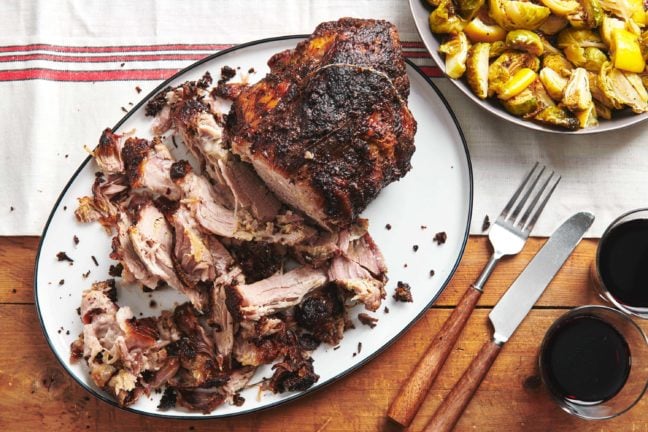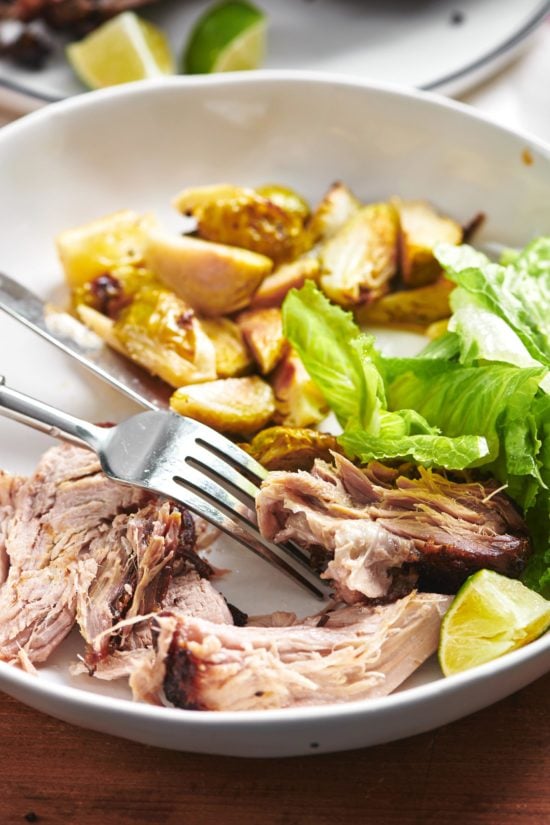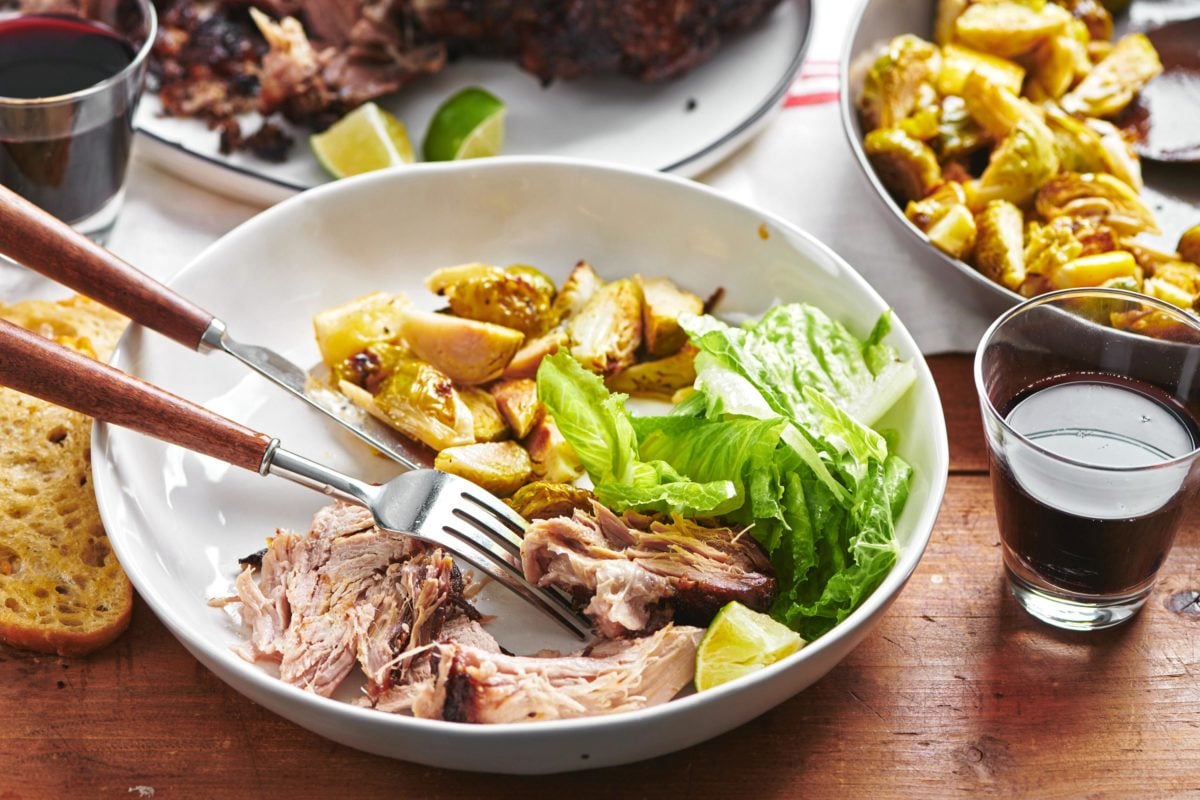Pork tenderloin is without a doubt the best cut of pork there is. As the name implies, it is boneless, tender, lean, and mild in flavor. In most respects, it is comparable to chicken, with the exception of cooking techniques. Despite all of its advantages, pork loin does have one disadvantage: if it isn’t cooked quickly, it will dry out and taste bland. This is why the modest, affordable, and frequently disregarded pork shoulder emerges as the superior option for slow-cooking recipes. The shoulder becomes remarkably lush and tender when cooked at temperatures of 250 degrees Fahrenheit or lower for a prolonged period of time.
The preferred cooking method for pork shoulder is heavily influenced by the meat’s anatomy. The roast is intricately constructed, with bones, connective tissues, fat, and a network of muscles that run in various directions. When cooked quickly, it takes on a stringy, chewy texture, but when prepared slowly, pork shoulder really shines. For retail purposes, shoulders are typically cut in half because whole shoulders produce a very large roast, frequently 12 pounds or more. The lower portion of the shoulder is typically sold as a fresh picnic or shoulder arm roast, while the upper portion is typically referred to as the butt or Boston Butt. Either of these options can be slow-cooked.
Shoulder roast cooking times vary depending on the cut you’ve chosen and how you’re cooking it. Shoulder roasts usually take 1 1/2 to 2 hours per pound at 250 F or lower. Expect your cooking times to be closer to the shorter end of that range if your roast is deboned and tied because it will cook more quickly. Roasts with the bones take longer to prepare, especially if you keep the meat’s thick rind of fat on. These cooking times presumptively cook the roast to well-done to fully appreciate the character of the shoulders.
The USDA lowered the safe temperature for pork in 2011 to 145 degrees Fahrenheit, the same as it did for other fresh meats. This means that you no longer need to cook pork to a well-done state, which is crucial if you’re cooking a loin. With shoulder, its a bit more complicated. When the internal temperature reaches 145 or 160 degrees Fahrenheit, you can treat it like a regular pork roast, but the dense muscles and connective tissues will still be chewy. The connective tissues will dissolve, the muscle fibers will soften, and your shoulder will acquire its renowned rich and lush texture if you cook it until the temperature reaches 180 to 200 F.
Although there are many ways to prepare shoulder meat, slow roasting and traditional barbecue are two of the most popular. Depending on the size of your roast, cook it in the oven at 250°F for six to eight hours, or until it is tender to the fork. If you want to crisp the skin, which is a sinful indulgence, remove the roast, increase the oven’s temperature to 500 F, and then place the roast back in for 15 minutes. Typically, dry spice rubs are used to flavor barbecued shoulders, which are then cooked at 200 to 250 degrees Fahrenheit over hardwood and charcoal. This produces traditional pulled pork, which has a thick layer of rich, moist pork inside and a hard, smoky layer of “bark” on the outside.
A trained chef, former restaurateur, and active freelancer with a passion for writing about food and nutrition, Fred Decker His work has appeared online on major sites including Livestrong. com, WorkingMother. com, the Houston Chronicle, and the San Francisco Chronicle websites, as well as offline in Canadas Foodservice He received his education at Northern Alberta Institute of Technology and Memorial University of Newfoundland.
What to Serve with Pork Shoulder Roast:
Leftovers are brilliant. Amazing quesadillas, enchiladas, burritos, soups, stews, sandwiches, and countless other dishes can be made with them.
How to Cook Pork Shoulder Roast
Chris mentioned to me that a chef once told him that meat prefers to be cooked at a temperature that is similar to the temperature it reaches when it is finished.
Although I don’t believe that is always the case (flame-kissed steaks and burgers anyone? ), it made sense to me when I considered a large, tough piece of meat, such as this boneless pork shoulder roast, which requires low and slow cooking to transform from impossible to tough to tender. Rushing the process won’t help in any way; you need to keep the heat low and the time long.
Pork butt roast or Boston Butt pork roast, which are both from the shoulder region, a little higher up, but are essentially the same cut of meat, can also be used to make this recipe and others similar to it.

When slow cooking boneless or bone-in pork shoulder in the oven, you have a lot of flexibility, which is wonderful when entertaining. In fact, the roast could be cooked at this low temperature for an additional hour or two without suffering any negative effects. Therefore, whenever everyone is ready to eat, you can simply place it on the table.
You can substitute bone-in pork shoulder, which will cook in roughly the same amount of time even though this recipe calls for boneless pork shoulder, which is a little easier to cut. Although the instructions specify that the fat side should be on the bottom of the pan, giving the top a chance to form a nice crust, it really doesn’t matter. Some people prefer the fat on top because it sort of bastes the pork while it cooks and leaves a less crusty surface. Your call, you won’t go wrong.
The best part is that you have free time to do things like read, dance, sleep, clean a closet, and rescue kittens from trees.

It’s important to emphasize this recipe’s adaptability because it’s one of its best qualities. There won’t be any consequences if you leave the roast in the very low oven for an additional hour, two hours, or even three. The pork is roasted in the open air, creating a wonderful crusty brown exterior and fall-apart tender interior.
Turn the heat up to 450°F if you think it needs a little more caramelization or browning at the very end. for 15 minutes before pulling it out of the oven. Make sure to give it some time to rest so that the fibers can unwind a little and the juices can gather.
Furthermore, keep in mind that if everything goes according to plan, the meat will be so tender that the slices won’t hold together. That’s part of the appeal.

For a Smaller Pork Shoulder Roast
You can still use the recipe successfully if your roast weighs less than 6 pounds; just reduce the cooking time slightly. You should still begin it on high heat in a 450°F oven. When the middle of the roast reaches 180°F on an internal thermometer and you can feel the meat is very tender throughout as you slide the thermometer in, the roast has finished cooking. Roast the pork for 20 minutes, then reduce the heat to 250°F and continue cooking for 4 to 7 hours.

